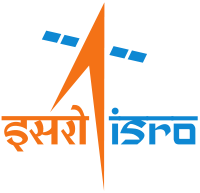Difference between revisions of "Indian Space Research Organization"
m |
m |
||
| Line 13: | Line 13: | ||
|administrator = K. Radhakrishnan | |administrator = K. Radhakrishnan | ||
|budget = | |budget = | ||
| − | |URL = [www.isro.org] | + | |URL = [ www.isro.org ] |
|seal = | |seal = | ||
|seal_cap = | |seal_cap = | ||
Revision as of 04:29, 9 March 2012
 This Fenspace article is a stub. You can help FenWiki by expanding it.
This Fenspace article is a stub. You can help FenWiki by expanding it.
| Indian Space Research Organization (ISRO) | |
 Logo | |
| Established | 1969 |
|---|---|
| Headquarters | Bangalore, India |
| Primary spaceport | Satish Dhawan Space Centre |
| Administrator | K. Radhakrishnan |
| Website | [ www.isro.org ] |
CopyPasta from Wikipedia
The Indian Space Research Organization (ISRO, play /ˈɪəɛrɵ/; Hindi: भारतीय अंतरिक्ष अनुसंधान संगठन Bhāratīya Antarikṣa Anusandhāna Saṅgaṭhana) is the primary body for space research under the control of Government of India and one of the big six advanced space research organization that dominate space, others being NASA (U.S), RKA (Russia), CNSA (China), ESA (Europe) and JAXA (Japan). It was established in its modern form in 1969 as a result of coordinated efforts initiated earlier. Activities for the exploration of space within and outside of Earth’s atmosphere. Headquartered in Bangalore (Bengaluru). ISRO’s chief executive is a chairman, who is also chairman of the Indian government’s Space Commission and the secretary of the Department of Space.
Objective
The objective of ISRO (Indian Research Space Organization) is to develop space technology and its application to various national tasks. Accordingly Indian Research Space Organization(ISRO) has successfully operationalised two major satellite systems namely Indian national Satellites(INSAT) for communication services and Indian Remote Sensing(IRS) satellites for management for natural resources; also, Polar Satellite Launch Vehicle(PSLV) for launching IRS type of satellite and Geostationary Satellite Launch Vehicle(GSLV) for INSAT type of satellites.
ISRO in Fenspace
| ||||||||||||||||||||